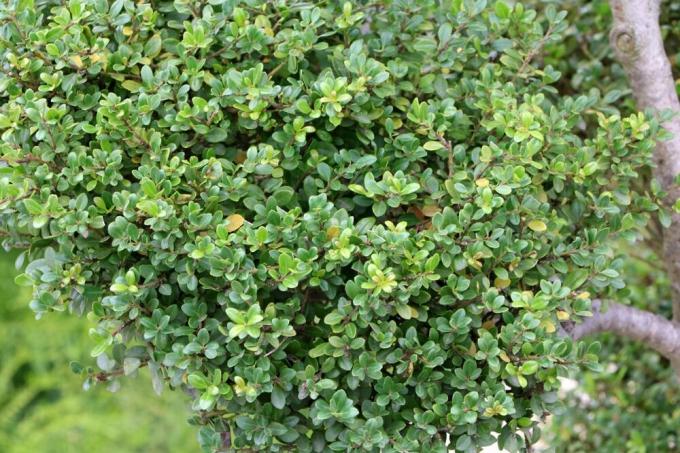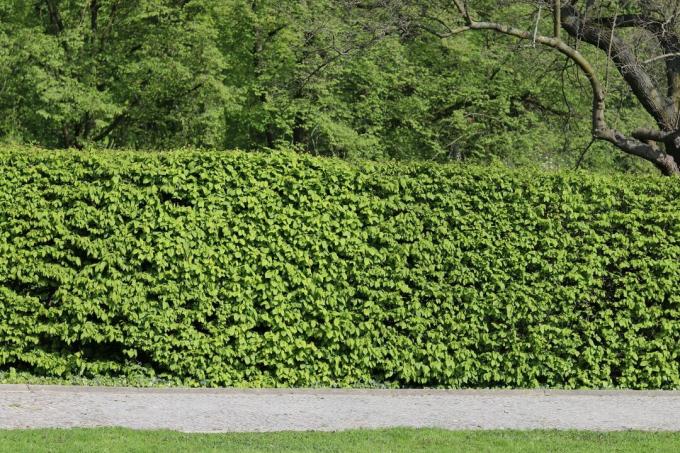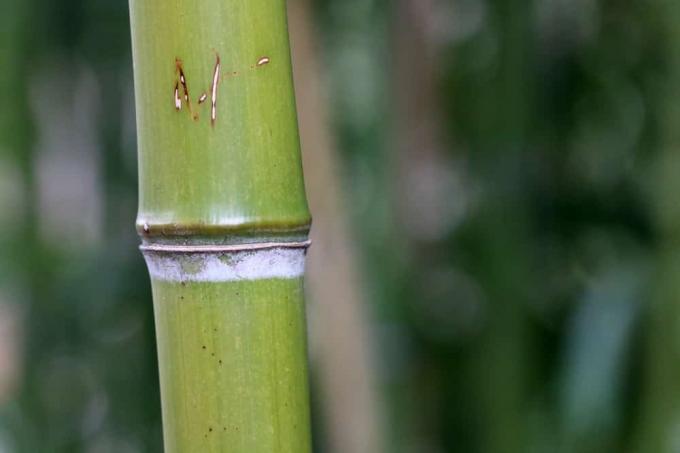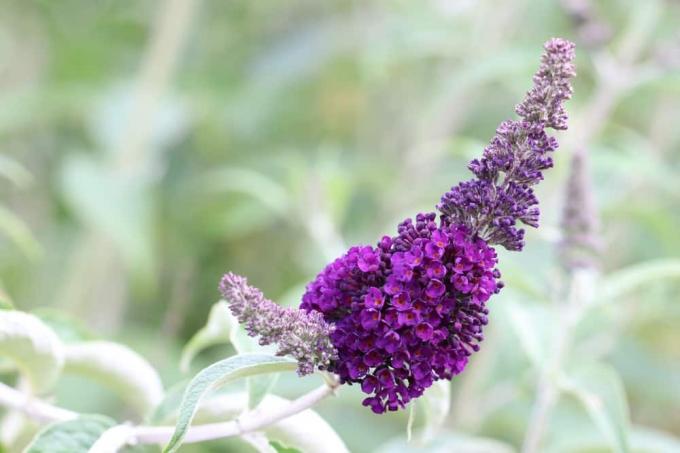

Table of contents
- growth and shape
- size and height
- soil and fertilization
- location and use
- root ball
- Berry
- blossoms
- leaves
- propagation
- pests
- Editor's tip
- Worth knowing about Ilex crenata shortly
The Ilex Crenata "Dark Green" comes from Japan and is a common boxwood substitute here. This species of holly is of great importance on Kyushu, Honshu, Hokkaido and Shikoku and serves as a Standard wood for landscape gardening in which it is usually found in the shape of a sphere, cone or pyramid is. This variety was selected from Belgian seedlings by the Oprins nursery in 2000 and registered for European plant variety protection in 2007.
growth and shape
The Ilex crenata "Dark Green" grows upright to broadly bushy and is less sparse than other comparable varieties. As long as it is not pruned, it generally grows taller than wide, but can grow more irregularly with age and thus develop more lateral to overhanging branches. Since the Ilex has not been on the market for very long and therefore too little is known about it, the Appearance at age and final height cannot yet be predicted but is believed to be similar to his kind of common. In favorable locations, a height of up to 3.50 meters and more is possible.
The plant looks more beautiful than a hedge garden bonsai. The plant is a real eye-catcher. In order to achieve the growth form, branches, twigs and shoots are cut back again and again. How often you have to cut depends on the growth. Some Ilex are only pruned in spring, others during the entire growing season. Important at Cut is an absolutely hot one bonsai scissors, so that there are only smooth cut surfaces. Blunt cut surfaces turn brownish. The shape cut should be carried out after the main growth period. Do not cut into leafless old wood.
size and height
This species of Ilex is very fast growing in its youth and can grow in the first year Get annual growth of up to 25 cm, with a good water and nutrient supply, for example in a container or pot also more. After several years of standing, an average increase in height of up to 15 cm and in width of up to 10 cm is possible. Heights of between 125 cm and 150 cm have already been measured in 6-year-old plants. Here the cut is relatively insignificant as this species is very regenerating.
soil and fertilization

The soil should be humus and nutritious and always moist but never wet. The Ilex Crenata likes sandy humus-rich, gravelly humus-rich or acidic mineral soil best, but it does not like very loamy, clayey and slightly acidic to neutral soil. The soil should generally be well permeable so that excess water can drain off quickly and waterlogging does not occur. This should be avoided under all circumstances, otherwise root rot can quickly occur. However, the Ilex does not tolerate soil that is too dry either, so it should be watered regularly, especially in the summer months, to prevent it from drying out. You should also pay attention to the pH value, otherwise there is a risk of chlorosis, which is usually a sign of a lack of Minerals, especially iron, magnesium, boron, sulfur or nitrogen, and often also indicates an excessively high level of common salt in the body close bottom.
This plant hardly needs fertilizer at all. If you want to fertilize, then it is best to use organic fertilizer from spring to autumn, but only half the concentration should be used. In very hot weather, fertilization should be avoided completely.
location and use
- The Ilex crenata "Dark Green" feels very comfortable in moist, warm, sunny to partially shaded locations.
- It also tolerates light shade under trees. It should always be protected from the winter sun and draughts.
- The Ilex is versatile, it is particularly suitable for balconies and terraces as a tub or potted plant.
- Due to the very good pruning tolerance, "Dark Green" is also suitable as a hedge for areas that are protected from view or for edging graves in cemeteries.
- Furthermore, it is a beautiful bed border and can also serve as a border.
root ball
The roots are very fine, mainly in the upper soil regions, and grow densely branched. Root growth is initially rather hesitant and opposite to the rest of the plant. The Ilex is very resistant to root pressure. To protect the roots from severe frosts, a mixed layer of peat, foliage and brushwood can be applied to the root area.
Berry
- In summer, spherical black and especially poisonous berries form, which are very nice to look at.
- The berries grow up to 6 mm and stay on the bush for a long time.
- These berries are very popular with birds, and eating them causes diarrhea and vomiting in humans.
- A natural distribution of the plant is given by the birds.
blossoms
From May to June, the Ilex Crenata "Dark Green" forms small, matt white, almost inconspicuous flowers. Since this species has two pods, this species of Ilex is a female plant. However, the flowers are mostly uninteresting for garden owners.
leaves

The leaves grow alternate, oval to lanceolate and are generally up to 2 cm long in sheltered conditions (e.g. in a greenhouse or conservatory). Outdoors, the leaves only reach this size when the Ilex is a little older. The leaf color is dark green and only slightly shiny. The petiole remains short and brownish like the shoots.
propagation
The plant is most often propagated by cuttings. In July or August after flowering, when the plant is in full bloom, cuttings can be taken from the shrub and simply planted in the ground. Root formation usually takes a little longer with a plug-in propagation, but the young plants develop fastest after a plug-in propagation. The berries also contain seeds that can be used for propagation. It should be noted, however, that this seed must first be stored in a container filled with sand for a year before it can germinate. The natural spread is by birds.
pests
The Ilex Crenata "Dark Green" is very resistant to pests and is not attacked by the dreaded boxwood fungus. Too high humidity, however, can favor an infestation by the red spider. Since the bark has a bitter taste, this Ilex is well protected against game browsing.
Editor's tip
The Ilex Crenata "Dark Green" is a winter-hardy plant that can easily tolerate lower temperatures Plant that likes high humidity but sensitive to heat and prolonged drought reacted. This tree tolerates shade well and is resistant to root pressure. Urban climate resistance, pest resistance, as well as a high opacity and excellent formability make the Ilex interesting for garden and balcony owners.
Worth knowing about Ilex crenata shortly
- Ilex crenata is very versatile: the plant looks good in tubs, as underplanting, group planting and also as Hedge.
- Ilex crenata can grow up to three meters high. At first the growth is stiffly upright, later it becomes expansive.
- The Ilex is hardy, but should not be too draughty.
- The ideal soil is acidic to neutral and definitely not calcareous. It should be humus and nutritious.
- One mulch layer makes itself positive, since the roots grow felty in the upper soil layers.
- There are about 30 different Ilex crenata varieties. The Convexa variety is suitable as a small hedge. Even after severe pruning, it sprout vigorously again. In old age, the hedge reaches a height of 3 to 4 meters. Ilex crenata Hetzii grows more widely and is only about 2 meters high. However, this variety is not quite as hardy.
 garden editorial
garden editorial I write about everything that interests me in my garden.
Learn more about hedges

Hornbeam hedge: 17 tips for care
Hornbeams (Carpinus betulus) are most commonly used as topiaries or hedge plants. They are actually not beeches at all, but belong to the birch family. The hornbeam is very robust, easy to care for and, in contrast to the common beech, not poisonous.

How fast does bamboo grow? | Information about growth
In domestic gardens, bamboo is usually used as a privacy screen or as a decorative solitary plant. The rapid growth, which can reach several cm a day, is impressive. It depends on the bamboo variety, care and the prevailing microclimate.

How fast does cherry laurel grow? | accelerate growth
The cherry laurel is a fast and densely growing tree. After planting, it usually only takes a few years for the young plants to grow into a tall, dense and evergreen hedge. In addition, growth can be accelerated by additional precautions.

Creating a mixed colorful hedge: 9 ideas for a mixed hedge
If you don't like it monotonous, you can also create a mixed hedge instead of a hedge from a single, evergreen plant species. There is a wide range of colorful hedges to choose from. There are special flowering hedges, ones for birds, scented ones, or for insects and butterflies.

Yellow cypress | 9 tips for care, pruning & growth
The yellow cypress is one of the most common hedge plants in our gardens. No wonder: it combines a great look with an opaque growth. How to properly care for them, cut them and generally promote their growth is here.

Thuja brabant turns brown or yellow: what to do? 8 common causes
When Thuja brabant turns yellow or brown, various factors can be responsible - but care mistakes are often the trigger. We reveal which factors are involved and how they can be counteracted.

